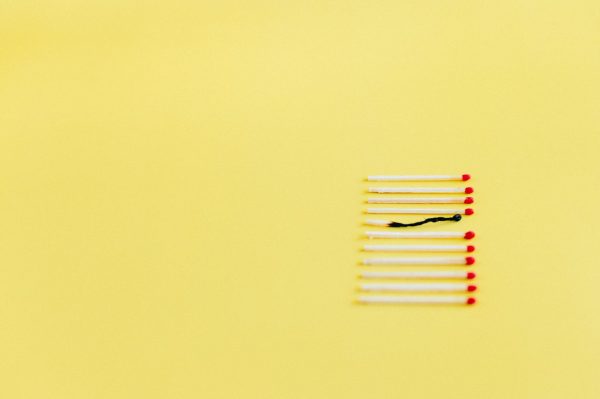Master Evidence Collection: Essential Screenshots & Logs Guide
Evidence collection is the cornerstone of effective compliance and cybersecurity practices. Whether you’re responding to an audit, investigating a security incident, or preparing for regulatory scrutiny, the ability to gather, organize, and present accurate evidence is critical. In today’s digital landscape, where SaaS platforms and cloud-based systems dominate, mastering the art of evidence collection—particularly through screenshots and logs—can make or break your organization’s ability to prove compliance, identify vulnerabilities, and maintain trust.
This guide delves into the essentials of evidence collection, focusing on the roles of screenshots and logs, best practices for capturing and storing them, and how to leverage these tools to meet compliance and cybersecurity goals.
—
Why Evidence Collection Matters in Compliance and Cybersecurity
Evidence collection serves as the backbone of accountability in digital environments. It enables organizations to:
1. Demonstrate Compliance: Regulatory frameworks like GDPR, HIPAA, and ISO 27001 require organizations to provide proof of adherence to specific standards. Evidence collection ensures you can meet these demands.
2. Investigate Incidents: When a security breach or system failure occurs, logs and screenshots provide a trail of activities, helping you identify the root cause and mitigate future risks.
3. Support Audits: Internal and external audits rely on documented evidence to assess your organization’s processes and controls.
4. Enhance Trust: Proper evidence collection builds credibility with stakeholders, clients, and regulators by showcasing transparency and diligence.
—
The Role of Screenshots in Evidence Collection
Screenshots are visual snapshots of your system’s state at a specific moment in time. They are particularly useful for:
– Capturing User Interfaces: Demonstrating how a system or application appeared during a specific event.
– Documenting Errors: Recording error messages or anomalies that occurred during an incident.
– Providing Visual Proof: Offering a clear, easily understandable representation of data or activities.
Best Practices for Taking Screenshots
1. Ensure Timestamps: Always include timestamps to establish when the screenshot was taken.
2. Capture Full Context: Include relevant menus, toolbars, or surrounding elements to provide context.
3. Use High Resolution: Ensure the screenshot is clear and legible, especially when zooming in on details.
4. Organize Files: Store screenshots in a structured manner, using consistent naming conventions and folders.
5. Avoid Alterations: Never edit or manipulate screenshots, as this can compromise their integrity as evidence.
—
The Role of Logs in Evidence Collection
Logs are automated records of events, activities, and transactions within a system. They are invaluable for:
– Tracking User Activity: Monitoring who accessed what, when, and from where.
– Recording System Events: Documenting changes, updates, or failures within your infrastructure.
– Analyzing Trends: Identifying patterns that could indicate vulnerabilities or non-compliance.
Types of Logs to Collect
| Log Type | Purpose |
|———————|—————————————————————————–|
| Audit Logs | Track user actions and system changes for compliance and security purposes. |
| Event Logs | Record system events, such as startups, shutdowns, and errors. |
| Access Logs | Document who accessed specific resources and when. |
| Error Logs | Capture system failures or malfunctions for troubleshooting. |
| Transaction Logs| Monitor financial or data transactions to ensure accuracy and integrity. |
Best Practices for Managing Logs
1. Enable Logging: Ensure logging is activated across all critical systems and applications.
2. Centralize Logs: Use a SIEM (Security Information and Event Management) tool to aggregate logs from multiple sources.
3. Retain Logs: Adhere to regulatory requirements for log retention periods (e.g., 6 months to 7 years).
4. Protect Logs: Encrypt and secure logs to prevent tampering or unauthorized access.
5. Regularly Review: Analyze logs periodically to detect anomalies or potential issues.
—
Combining Screenshots and Logs for Comprehensive Evidence
While screenshots provide visual proof and logs offer detailed records, combining the two creates a robust evidence collection strategy. Here’s how they complement each other:
– Screenshots: Offer an immediate, human-readable snapshot of a situation.
– Logs: Provide a detailed, timestamped history of events leading up to or following the screenshot.
For example, if a user reports an error in your SaaS platform, a screenshot of the error message can be paired with logs showing the user’s actions and system responses at the time.
—
5 Steps to Master Evidence Collection
1. Identify Key Data Sources: Determine which systems, applications, and devices require evidence collection.
2. Define Collection Protocols: Establish guidelines for taking screenshots and enabling logs.
3. Automate Where Possible: Use tools to automate log collection and screenshot capture for consistency and efficiency.
4. Train Your Team: Educate employees on evidence collection best practices and their importance.
5. Regularly Audit Your Process: Review your evidence collection methods to ensure they meet evolving compliance and cybersecurity needs.
—
Challenges in Evidence Collection and How to Overcome Them
While evidence collection is essential, it comes with its own set of challenges:
– Volume of Data: Logs and screenshots can quickly accumulate, overwhelming your storage capacity. Use compression, archiving, and tiered storage solutions to manage data.
– Data Integrity: Ensuring logs and screenshots remain unaltered is critical. Implement cryptographic hashing and access controls to safeguard evidence.
– Compliance Complexity: Different regulations have varying requirements for evidence retention and protection. Conduct regular compliance audits to stay aligned.
—
Tools to Streamline Evidence Collection
Several tools can simplify the process of capturing and managing evidence:
– SIEM Solutions: Platforms like Splunk and IBM QRadar centralize and analyze logs.
– Screenshot Tools: Applications like Snagit or Greenshot automate screenshot capture and organization.
– Compliance Software: Tools like Certidor help manage evidence collection for specific regulatory frameworks.
—
Conclusion
Mastering evidence collection is non-negotiable for compliance officers, cybersecurity managers, and SaaS founders. Screenshots and logs are indispensable tools for documenting activities, proving compliance, and investigating incidents. By following best practices, leveraging the right tools, and addressing challenges proactively, you can build a robust evidence collection process that enhances your organization’s security posture and regulatory readiness.
In a world where digital trust is paramount, the ability to collect, manage, and present evidence effectively sets you apart as a leader in compliance and cybersecurity. Start implementing these strategies today to safeguard your organization’s future.




